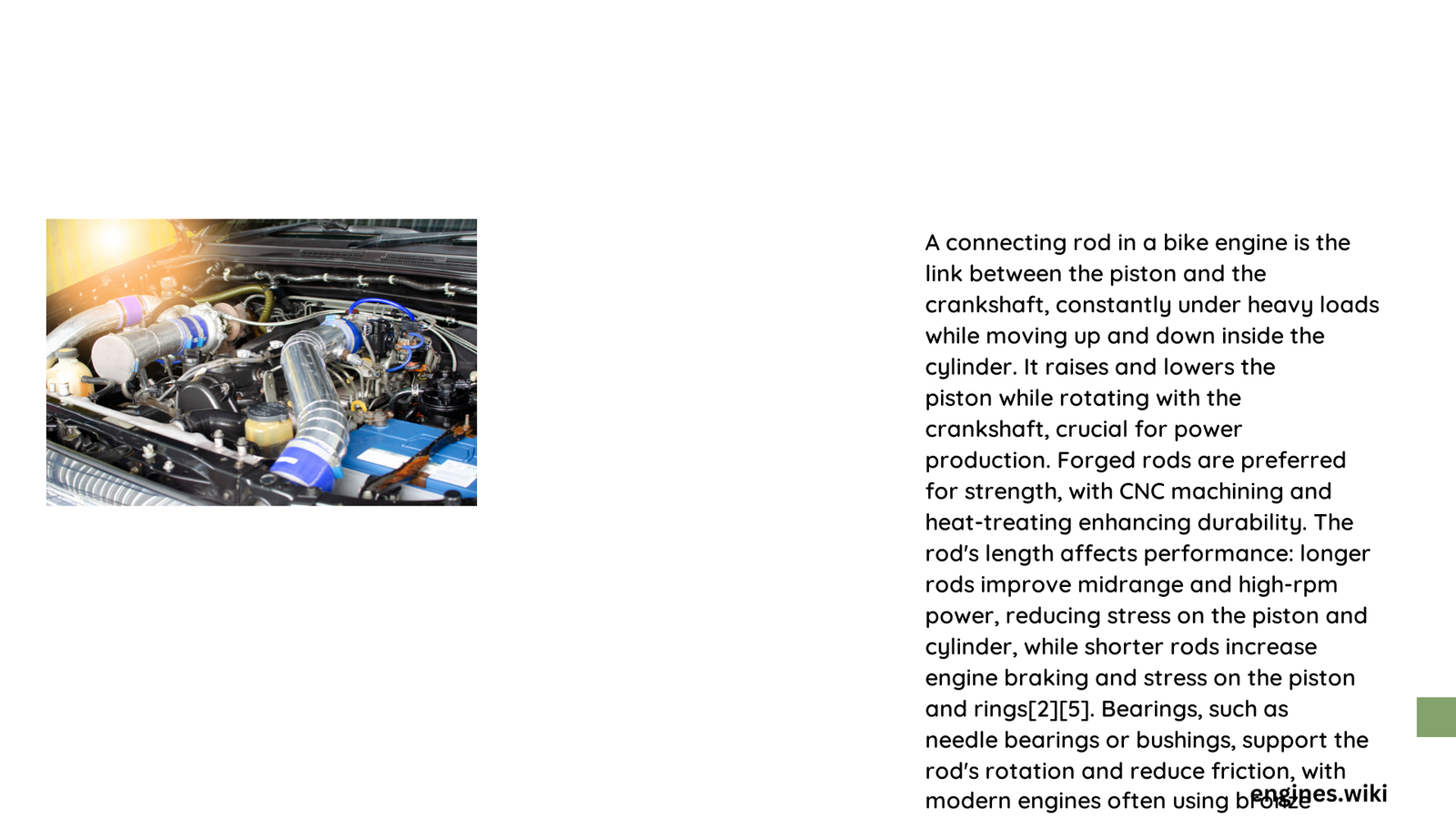Connecting Rod in Bike Engine: Technical Exploration
A connecting rod is a crucial mechanical component in a bike engine that transforms reciprocating piston motion into rotational crankshaft movement. This intricate part experiences extreme stress, temperature variations, and dynamic loads, making its design and material selection critical for overall engine performance, durability, and efficiency.
What Makes Connecting Rod Essential in Bike Engines?
Connecting rods serve as the critical link between the piston and crankshaft, converting linear motion into rotational energy. Their precision engineering determines an engine’s power transmission, mechanical efficiency, and long-term reliability.
Key Performance Characteristics
| Parameter | Typical Range | Impact |
|---|---|---|
| Length | 100-150 mm | Stroke efficiency |
| Material | Steel/Aluminum | Weight and strength |
| Cross-section | Varies by engine | Stress distribution |
How Do Material Choices Affect Connecting Rod Performance?
Material Comparison
- Carbon Steel
- High strength
- Cost-effective
- Moderate weight
-
Yield stress: 462-531 MPa
-
Aluminum Alloys
- Lightweight
- Lower strength
- Higher manufacturing cost
-
Yield stress: 172-300 MPa
-
Titanium
- Exceptional strength-to-weight ratio
- High corrosion resistance
- Expensive
- Best for high-performance applications
What Determines Optimal Connecting Rod Design?
Critical Design Parameters
- Length Calculation: Typically 2x piston stroke
- Cross-sectional Area: Calculated using thickness formula
- Stress Distribution: Minimizing concentration points
- Weight Optimization: Reducing reciprocating mass
What Causes Connecting Rod Failure?
Primary Failure Mechanisms
- Excessive axial stress
- Bending loads
- Material fatigue
- Improper alignment
- Inadequate lubrication
How Can Connecting Rod Reliability Be Enhanced?
Preventive Strategies
- Advanced finite element analysis
- Precision manufacturing
- Regular maintenance
- Material selection based on application
- Stress distribution optimization
Technical Insights for Engineers
Connecting rods represent a complex engineering challenge, balancing multiple performance parameters:
– Minimizing weight
– Maximizing strength
– Ensuring durability
– Reducing manufacturing costs
Practical Recommendations
- Choose materials matching specific engine requirements
- Implement rigorous quality control
- Conduct periodic stress analysis
- Consider application-specific design modifications
Advanced Considerations
Modern connecting rod design incorporates:
– Computer-aided design (CAD)
– Computational fluid dynamics (CFD)
– Advanced metallurgical techniques
– Nano-material research
Conclusion
Connecting rods are more than mechanical components; they represent the intersection of materials science, mechanical engineering, and precision manufacturing.

